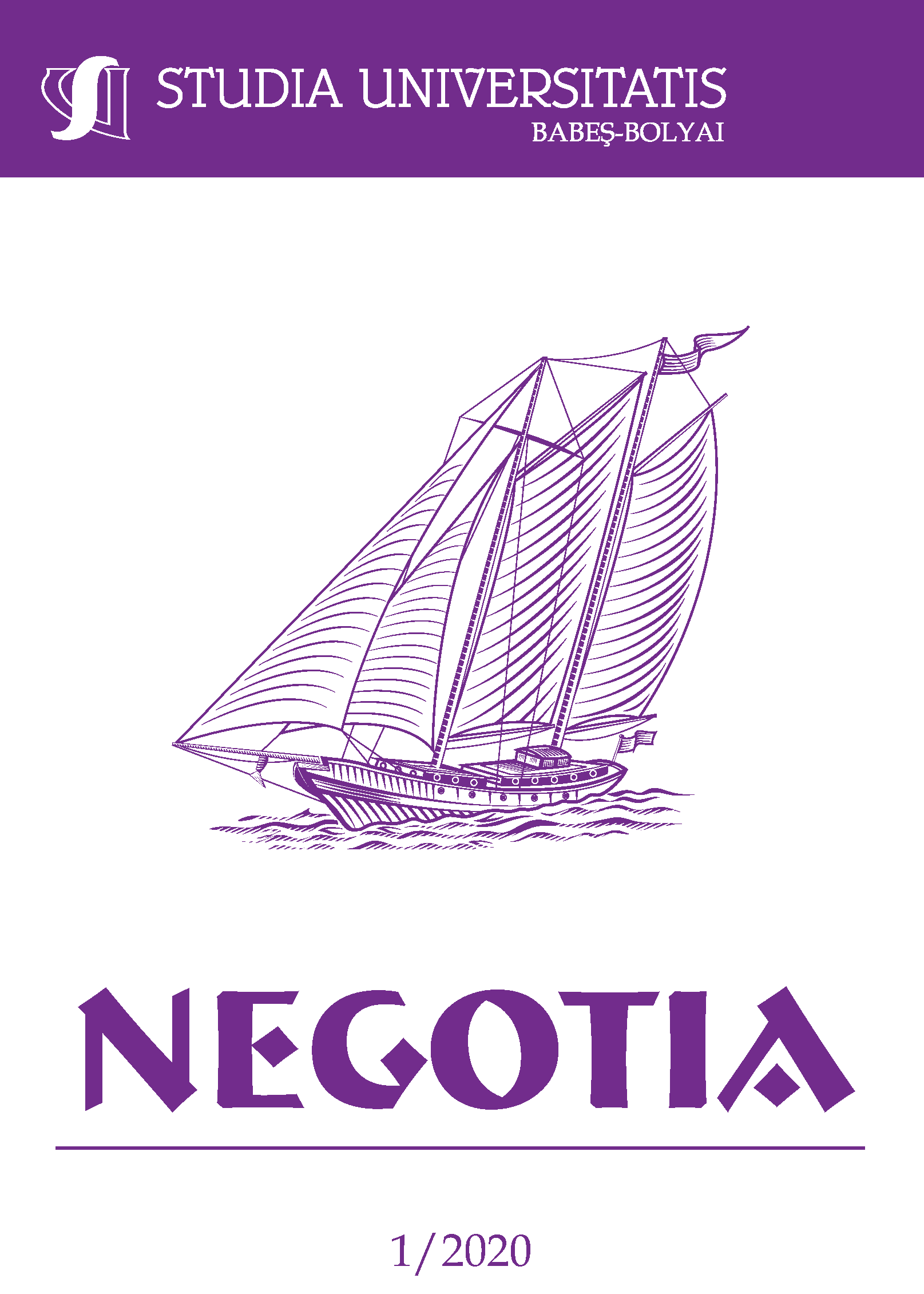STRENGTHS AND WEAKNESSES OF (INTER)NATIONAL BRANDS: IKEA, L’ORÉAL, STARBUCKS AND FORD, BASED ON THE OPINION OF CONSUMERS
DOI:
https://doi.org/10.24193/subbnegotia.2020.1.04Keywords:
IKEA, L’Oréal, Starbucks, Ford, consumer opinion, strengths and weaknesses.Abstract
In our everyday lives the presence of global brands is indisputable, as we decorate our homes with furnishings, purchase cosmetics to reverse the time, use services to make our everyday lives more enjoyable and purchase cars, all of which are available in several countries. It is also true that we typically buy and use those products and services that contribute to our personal appearance and to the development of our personality. In addition, the country of origin of a given product/brand also plays an important role in our purchasing decision. There are products/brands that we immediately associate with a particular country and nation, but there are countries to which we cannot associate any product or brand. This paper analyses the consumer opinions of international brands that are strongly associated with a particular country. The objectives of the analyses are the following: to identify (1) the strengths - (2) weaknesses of IKEA, L’Oréal, Starbucks and Ford, (3) to identify those factors, based on the results, that have an important role in case of two (inter)national brands at least, even though they represent different products/services, and finally, (4) to describe the opinion of the participants.
JEL Classification: M31
References
Edvardsson, B. and Enquist, B. (2002), “‘The IKEA Saga’: How Service Culture Drives Service Strategy”, The Service Industries Journal, Vol. 22 No. 4, pp. 153-186
Ghodeswar, B. M. (2008), “Building brand identity in competitive markets: a conceptual model”, Journal of Product & Brand Management, Vol. 17 No 1, pp. 4–12
Harris, F. and de Chernatony, L. (2001), “Corporate branding and corporate brand performance”, European Journal of Marketing, Vol. 35 No. 3/4, pp. 441-456
He, H., Li, Y. and Harris, L. (2012), “Social identity perspective on brand loyalty”, Journal of Business Research, Vol. 65 No. 5, pp. 648–657
Hellström, D. and Nilsson, F. (2011), “Logistics‐driven packaging innovation: a case study at IKEA”, International Journal of Retail & Distribution Management, Vol. 39 No. 9, pp. 638-657
Hultén, B. (2012), “Sensory cues and shoppers’ touching behaviour: the case of IKEA”, International Journal of Retail & Distribution Management, Vol. 40 No. 4, pp. 273-289.
Ivarsson, I. and Alvstam, C. G. (2010), “Upgrading in global value-chains: a case study of technology-learning among IKEA-suppliers in China and Southeast Asia”, available at: http://citeseerx.ist.psu.edu/viewdoc/download?doi=10.1.1.954.8430&rep=rep1&type=pdf
Janonis, V., Dovaliené, A. and Virvilaité, R. (2007), “Relationship of Brand Identity and Image”, Engineering Economics, Vol. 51 No. 1, pp. 69-79
Jonsson, A. and Foss, N. J. (2011), “International expansion through flexible replication: Learning from the internationalization experience of IKEA”, Journal of International Business Studies, Vol. 42 No. 9, pp. 1079–1102
Lindqvist, U. (2009), “The Cultural Archive of the IKEA Store”, Space and Culture, Vol. 12 No. 1, pp. 43-62
Mihailovich, P. (2006), “Kinship branding: A concept of holism and evolution for the nation brand”, Place Brand Public, Vol. 2 No 3, pp. 229–247
Mochon, D., Norton, M. I. and Ariely, D. (2012), “Bolstering and restoring feelings of competence via the IKEA effect”, International Journal of Research in Marketing, Vol. 29 No. 4, pp. 363-369
Nebenzahl, I. D. and Jaffe, E. D. (1996), “Measuring the joint effect of brand and country image in consumer evaluation of global products”, International Marketing Review, Vol. 13 No. 4, pp. 5-22
Norton, M. I., Mochon, D. and Ariely, D. (2012), “The IKEA Effect: When Labor Leads to Love”, Journal of Consumer Psychology, Vol. 22 No. 3, pp. 453–460
O’Shaughnessy, J. and O’Shaughnessy, N. J. (2000), “Treating the Nation as a Brand: Some Neglected Issues”, Journal of Macromarketing, Vol. 20 No. 1, pp. 56-64
Olins W. (2004), A márkák: A márkák világa, a világ márkái [The Brands: the World of the Brands, the World’s Brands], Jószöveg Műhely Publisher, Budapest
Randall G. (2000), Márkázás a gyakorlatban [Branding in Practice], Geomédia Szakkönyvek Publisher, Budapest
Rosner, D. and Bean, J. (2009), “Learning from IKEA Hacking: ‘I’m Not One to Decoupage a Tabletop and Call It a Day’”, available at: http://faculty.washington.edu/dkrosner/research/Rosner_Ikea-hacking.pdf
S. Nagy K. (1987), Lakberendezési szokások [Home furnishing habits], Magvető Publisher, Budapest
Salzer, M. (1994), “Identity Across Borders. A Study in the ‘IKEA-World”, available at: http://www.diva-portal.org/smash/get/diva2:603282/FULLTEXT01.pdf
Stompff, G. (2003), “The forgotten bond: brand identity and product design”, Design Management Journal, Vol. 14 No. 1, pp. 26-32
Veres Z, (2004), Szolgaltatásmarketing [Service marketing], KJK Kerszöv Publisher, Budapest
Brădățeanu, V. (2018), “PORTRET. Gheorghe Zamfir – cel mai iportant interpret la nai din toate timpurile, un rebel care a metamorfozat sunetul”, [PORTRAIT. Gheorghe Zamfir - The most important performer of all time, a rebel who metamorphosed the sound] available at: http://www.rador.ro/2018/04/06/portret-gheorghe-zamfir-cel-mai-important-interpret-la-nai-din-toate-timpurile-un-rebel-care-a-metamorfozat-sunetul-2/, accessed on: 15.01.2020
Németh, K. (2018), “Milyen a jó logó? Mire figyelj a tervezésnél?” [“What makes a logo great? What to pay attention when designing one?”], available at: http://blog.webshark.hu/2018/06/04/milyen-jo-logo/, accessed on: 15.01.2020
http://oroszok.reblog.hu/az-orosz-rulett-titka, accessed on: 25.01.2020
https://hu.wikipedia.org/wiki/Bikaviadal, accessed on: 17.11.2019
https://www.interbrand.com/best-brands/best-global-brands/2019/ranking/, accessed on: 05.12.2019
https://www.loreal.hu/csr-%E2%80%93-t%C3%A1rsadalmi-felel%C5%91ss%C3%A9gv%C3%A1llal%C3%A1s/l%E2%80%99or%C3%A9al-%E2%80%93-unesco-a-n%C5%91k%C3%A9rt-%C3%A9s-a-tudom%C3%A1ny%C3%A9rt, accessed on: 18.12.2019
https://www.forwomeninscience.com/en/awards, accessed on: 18.12.2019
http://mediapedia.hu/ford, accessed on: 20.12.2019
https://www.ford.com/suvs-crossovers/ecosport/, accessed on: 20.12.2019
https://www.consumeraffairs.com/furniture/ikea.html, accessed on: 01.01.2020 – 02.01.2020
https://www.consumeraffairs.com/retail/loreal.html, accessed on: 02.01.2020
https://www.consumeraffairs.com/food/starbucks.html, accessed on: 03.01.2020
https://www.consumeraffairs.com/automotive/ford-cars-and-trucks.html, accessed on: 04.01.2020 – 05.01.2020
https://www.consumeraffairs.com/about/faq/#what-is-consumeraffairs-for-brands, accessed on: 03.01. 2020
Downloads
Published
How to Cite
Issue
Section
License
Copyright (c) 2020 Studia Universitatis Babeș-Bolyai Negotia

This work is licensed under a Creative Commons Attribution-NonCommercial-NoDerivatives 4.0 International License.






